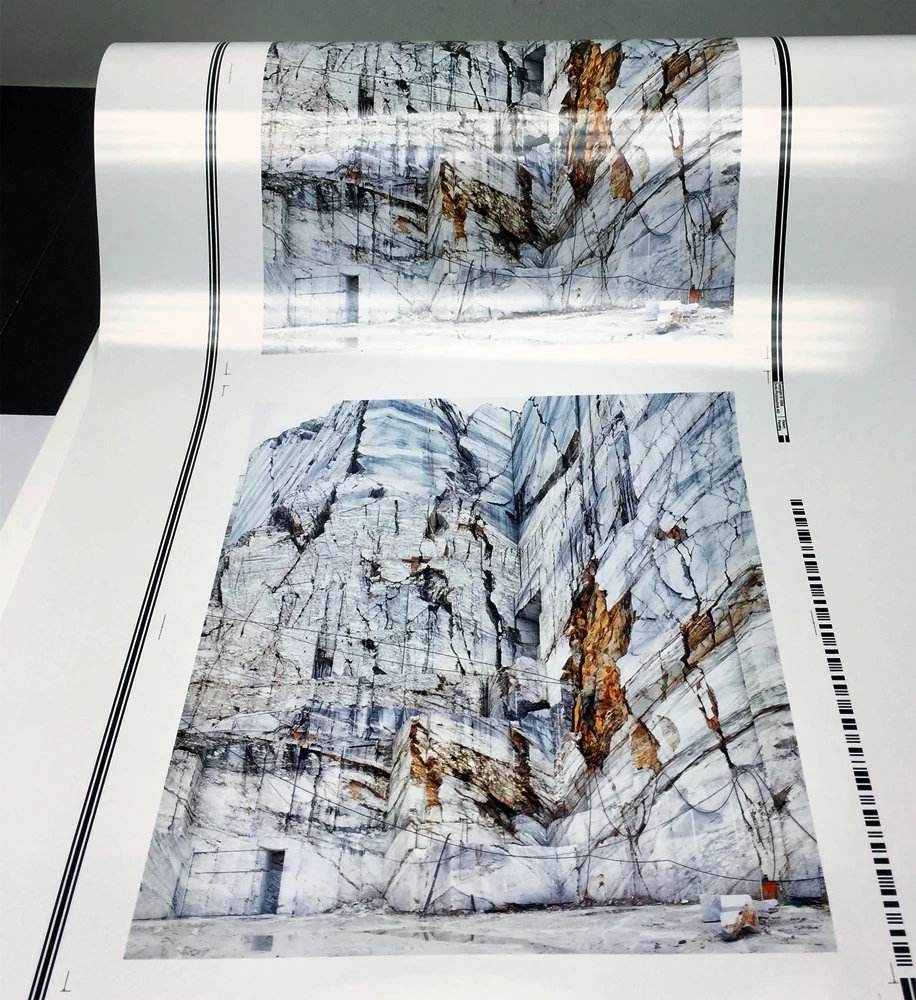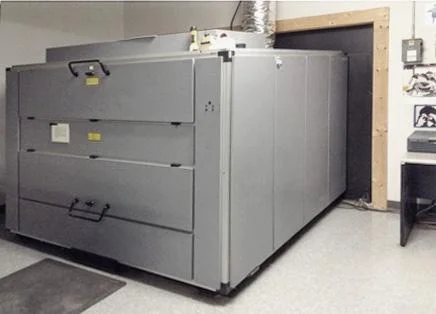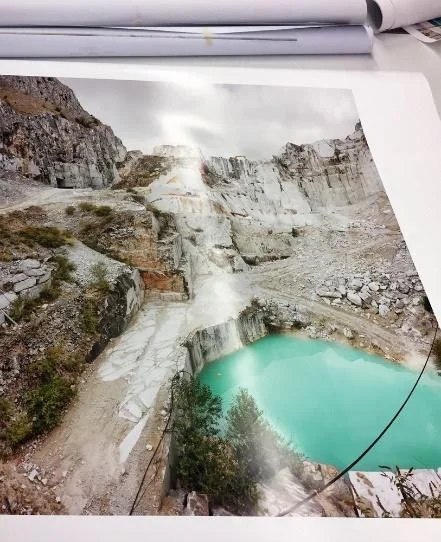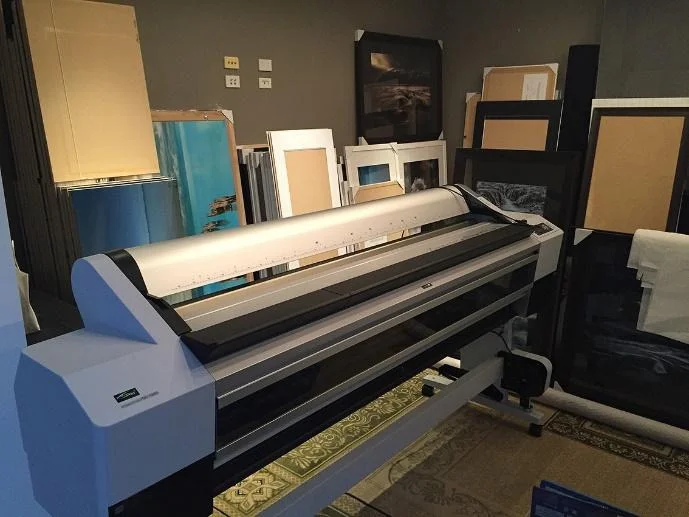Different paper, different printers
I spent quite a long time to understand which were the best paper and process for my photographic works.
Actually, I’m used to print on different types of papers, Chromogenic Paper and Pigment Paper. The choice depends mostly on the final result I’m seeking for my images.
Chromogenic prints are the result of printing a digital file on a continuous tone printer (Lambda Durst Printer) that uses chromogenic (silver based) paper, while Pigment prints (also known as giclees) are produced with professional inkjet printers.
Types of Prints
Chromogenic Prints (also known as C-prints)
The Chromogenic Print process with a Lambda Printer is a conventional wet-processed print that is exposed via three laser beams projecting the image on to light sensitive materials. The printer expose the paper to light to achieve black. Lambda prints are beautiful, but the paper surfaces are rather limited since these are traditional light sensitive papers.
I use the Lambda printer to print on papers like Fuji Flex, or Kodak Endura Metallic. It’s a proper photographic process and the effect is stunning. The sharpness might be a bit inferior compared to a similar sized print from an inkjet, however, the colour tonality is more accurate, especially in the darker areas, whereas inkjets tend to make the dark tones a little muddy on matte paper. Most of the C-Prints can be mounted on Diasec (Acrylic or Perspex).
Pigment prints
Pigment print is the result of a digital file printed on paper, using an inkjet printer. The term has come to be associated with prints produced to fine art papers. In general pigment prints cannot be Diasec mounted. I,m used to frame them in a wooden box, with art antireflection glass.
Personal view
Personally, I find an aesthetic appeal on the C-Prints on Fujiflex or Kodak Endura Metallic photographic paper. They are very similar to the Cibachrome that I enjoyed when I started printing years ago from the film. Pigment paper are closer to what I used to obtain with the enlarger in my darkroom. These prints look nearly identical to classic photographic prints I loved from the darkroom age. I love touching the soft and thick paper made of a mix between rag (cotton) and cellulose as I was used with the black and white photographic paper. Moreover, the range of baryta offerings has increased over the last five years or so, and the quality of these papers is extremely high.
From that standpoint, it is really a matter of personal preference.
Chromogenic print from Lambda Durst
Lambda Durst
Pigment print on Canson Baryta paper
Epson Stylis Pro 11880 Inkjet printer
https://www.luigivisconti.com



